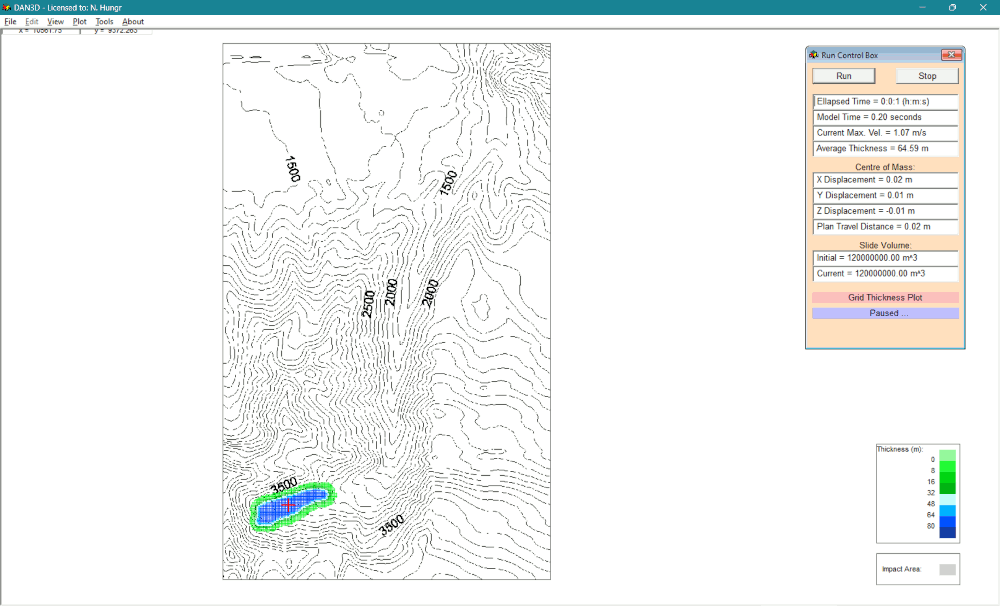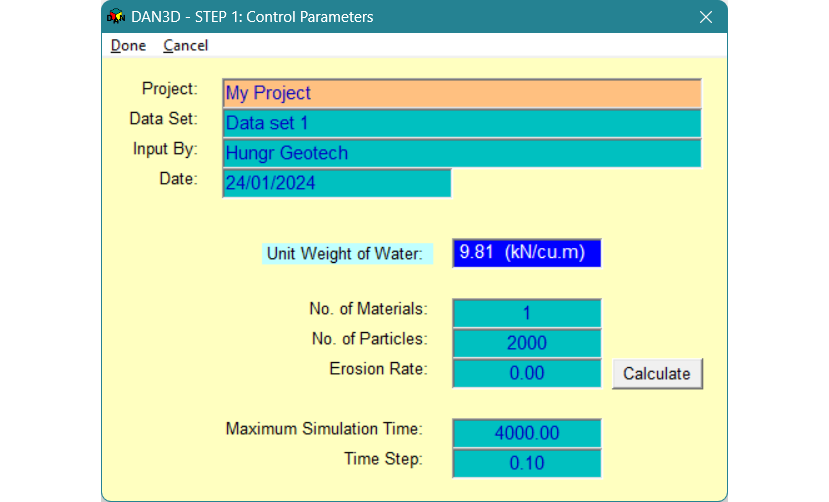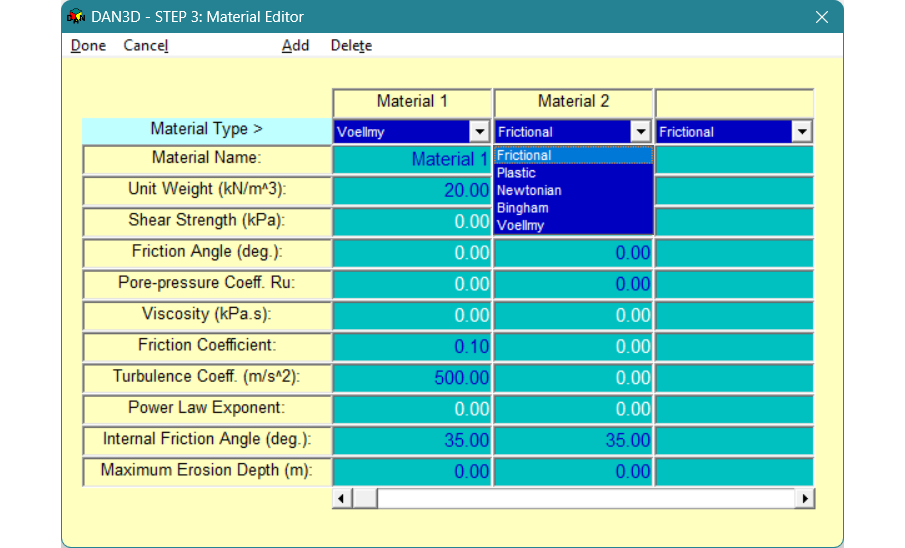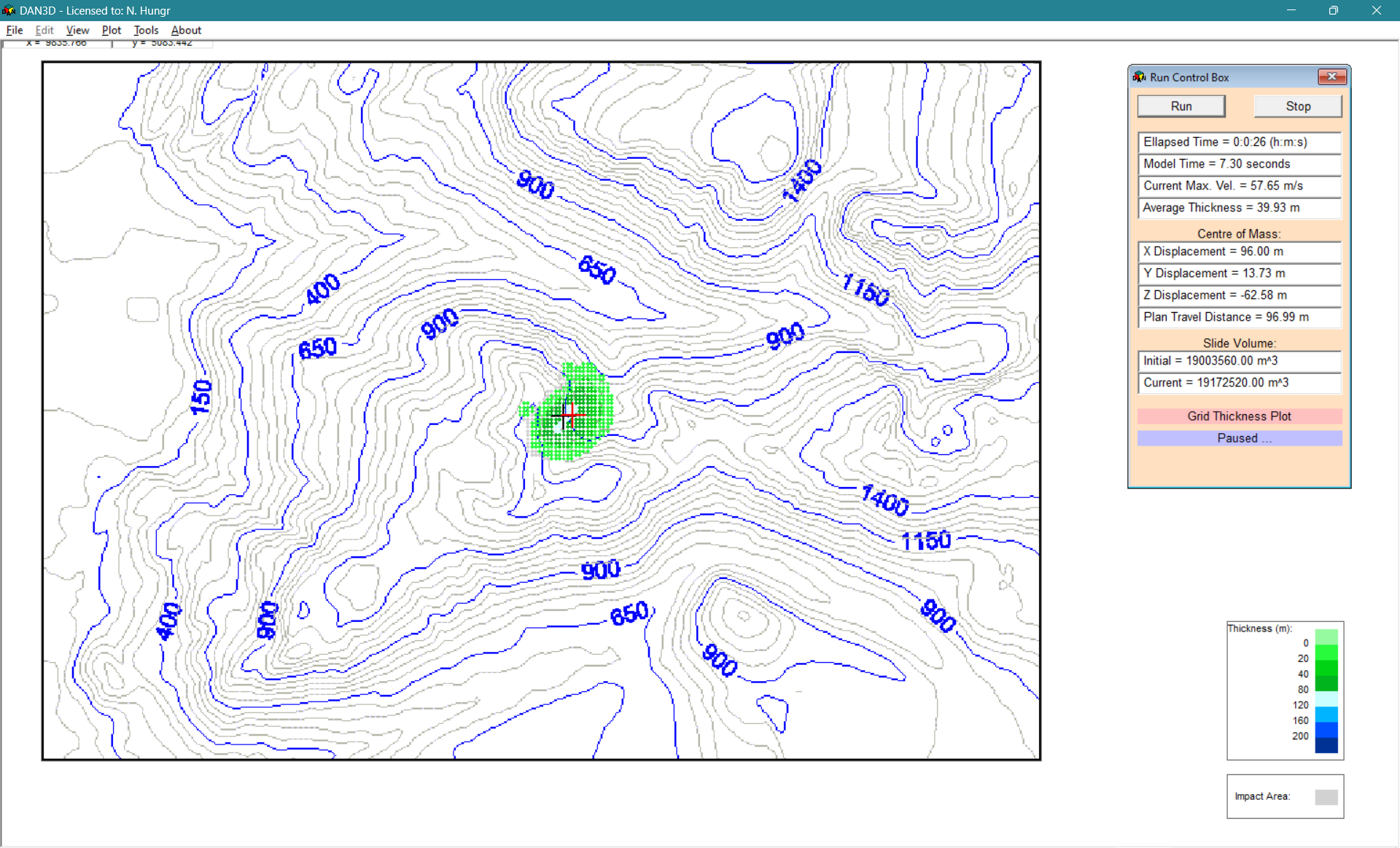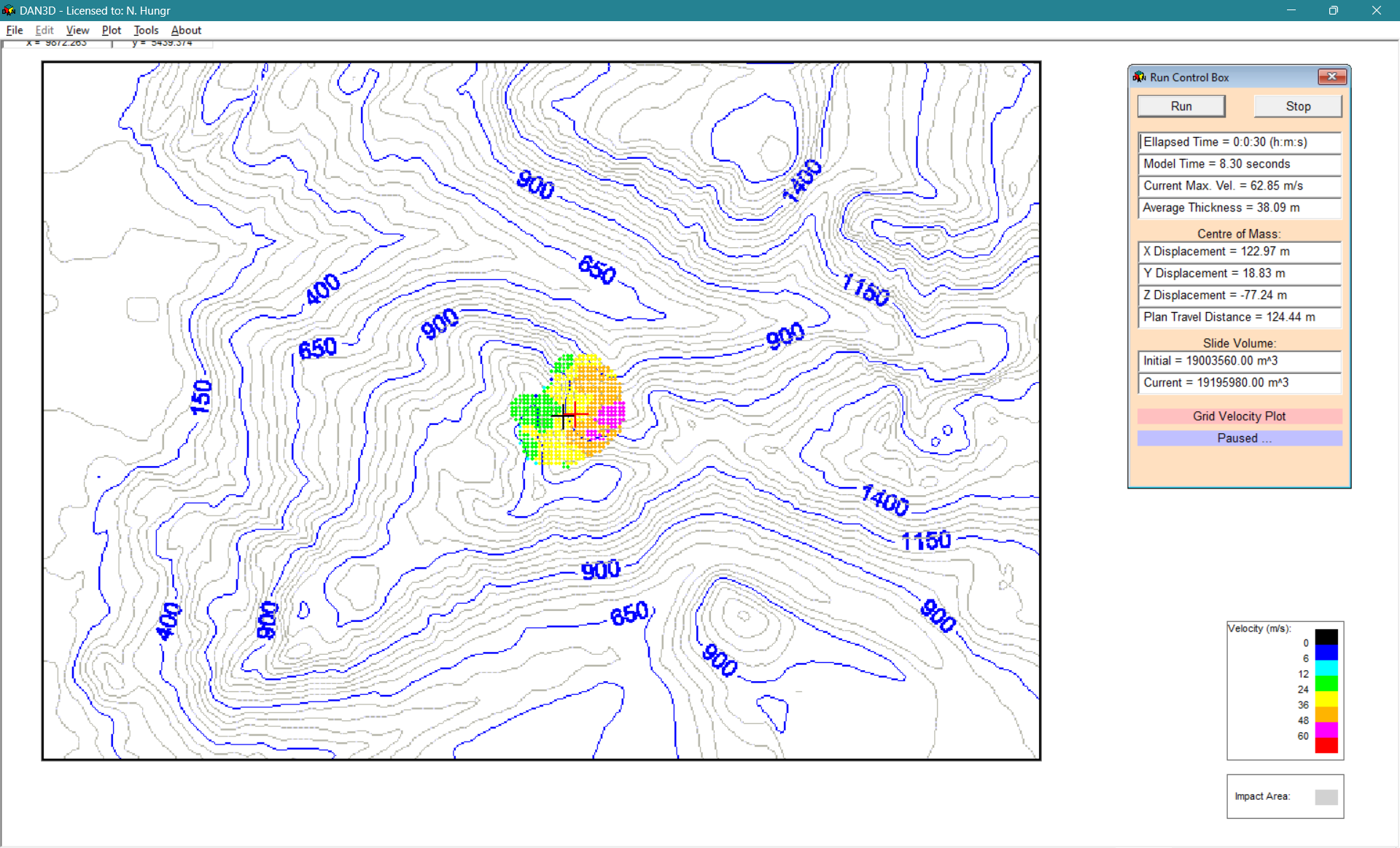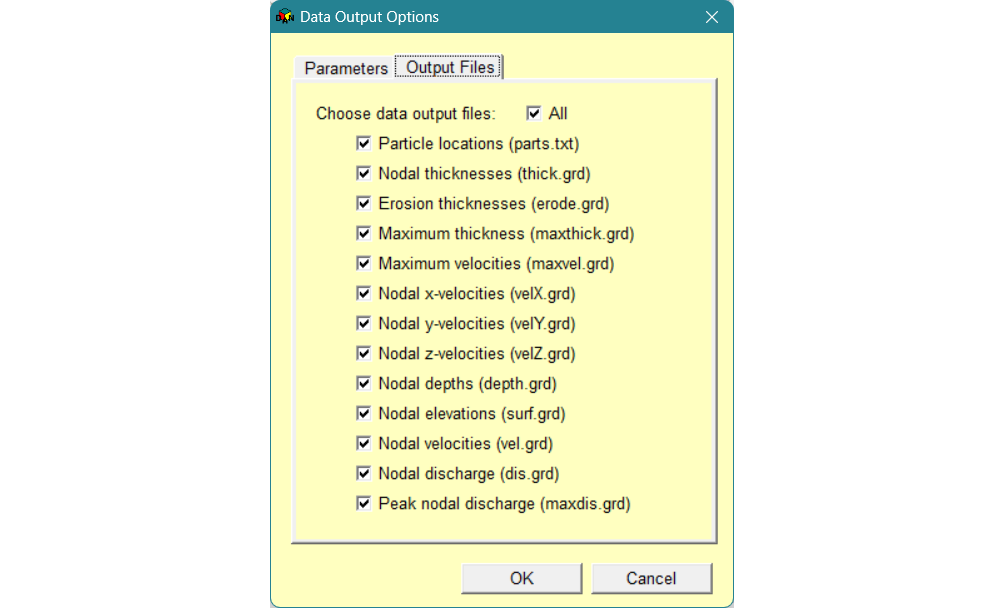DAN3D
3D Runout Analysis
DAN3D is a Windows-based program for the dynamic analysis of rapid flow slides, debris flows and avalanches over three-dimensional terrain, based on the numerical model developped by McDougall and Hungr (2004, 2005).
A depth-averaged Lagrangian solution is implemented using meshless smooth particles hydrodynamics.
The software accepts as input the 3D path and initial sliding mass topographies, as well as the optional distribution of erodible materials throughout the topography. Materials are based on five different rheologies: frictional, plastic, Newtonian, Bingham and Voellmy.
The slide mass is animated on the screen as the numerical simulation progresses.
